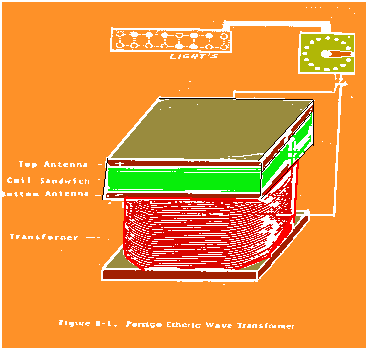
METHOD AND APPARRATUS FOR ACCUMULATING ELECTRIC ENERGY AND TRANSFORMING ETHER ELECTRIC ENERGY
Drawings by Geoff Egel ,Content Author unknown
In 1926. Harry E. Perrico claimed to have discovered a method to tap the energy from atmospherics. He even had a car which he converted to run on electricity. that was generated in his ether wave accumulator".
He applied for a patent December 31 1925 with serial number 78,715 being assigned. Perrigo's patent application Is considered a "classic" In patent law and Is listed under the classification of Perpetual Motion Machines and other Impossible Inventions.
Despite the Patent Office's attitude towards Perrico's invention, there were a number of reputable people who claimed to have witnessed his device In action producing useable electric power.
The existence of electromagnetic radiation, the modem term, or electric waves In the ether as it used to be called was known by Hertz, a research scientist who discovered the photoelectric effect
In 1887. Atmosphierics, an electrical disturbance in the atmosphere, were known to produce noises In the early radio telegraph stations, some being strong enough to drown out the received signal.
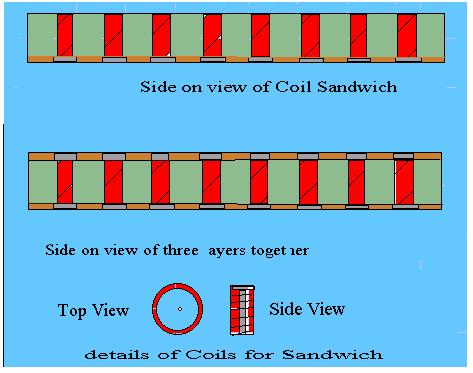
All that was needed was a method of transforming the existing radiation Into useable energy. Hie claimed to have developed a mechanism to intercept and collect from the general ether field electric wave energy and to transform it into useable electromotive force.
The basic method he used was an antenna arrangement which collected and resisted the Incoming energy raising It to a high enough current level where it could be run through a special electrical transformer to further intensify the available power.
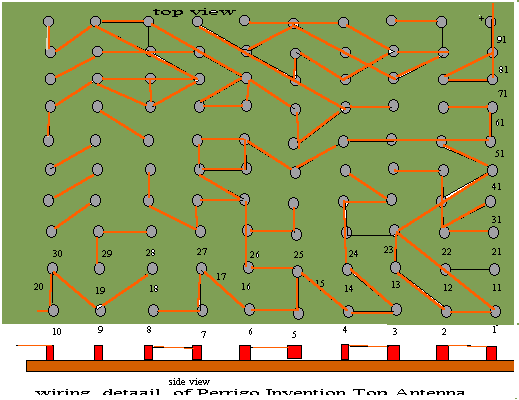
Then by trial and error approach he connected the ends of the electromagnets to other nails in such a way that there was a maximum voltage between the wire and the nail.. His patent application mirrored this electrical connection scheme in a more refined electromechanical approach.
Two accumulator plates were made with 100 round protruding knobs in a square 10 X 10 array
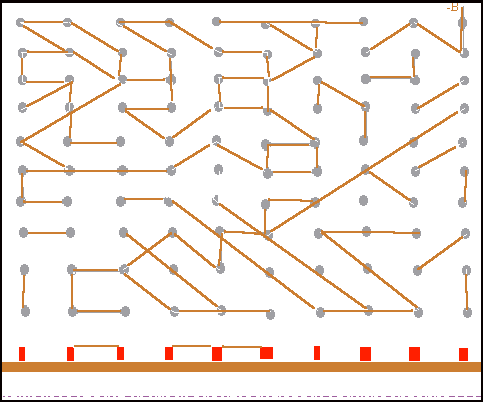
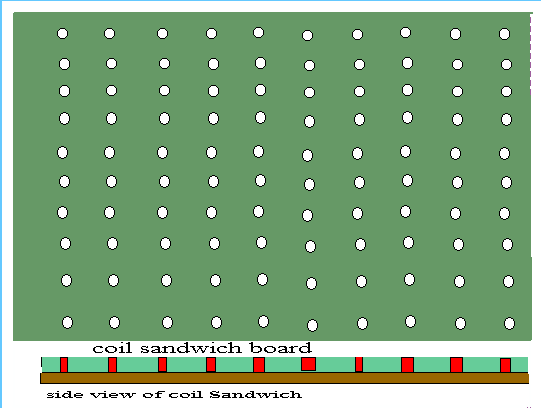
The plates were set on top of the transformer and Perrigo claimed this arrangement enhanced the energy accumulation process.
I have no idea of what materials the plate or protrusions were made The patent drawing would lead one to believe they are the same material.
It could be a metal or a nonconductor. such as wood or a combimation. The protrusions were connected by the same wiring scheme
Previously mentioned for the roofing nail model. The connections were different for the two plates.
(See diagrams for the plates connections
Geoff Egel 18 Sturt Street, Loxton ,5333, South Australia ,Australia


